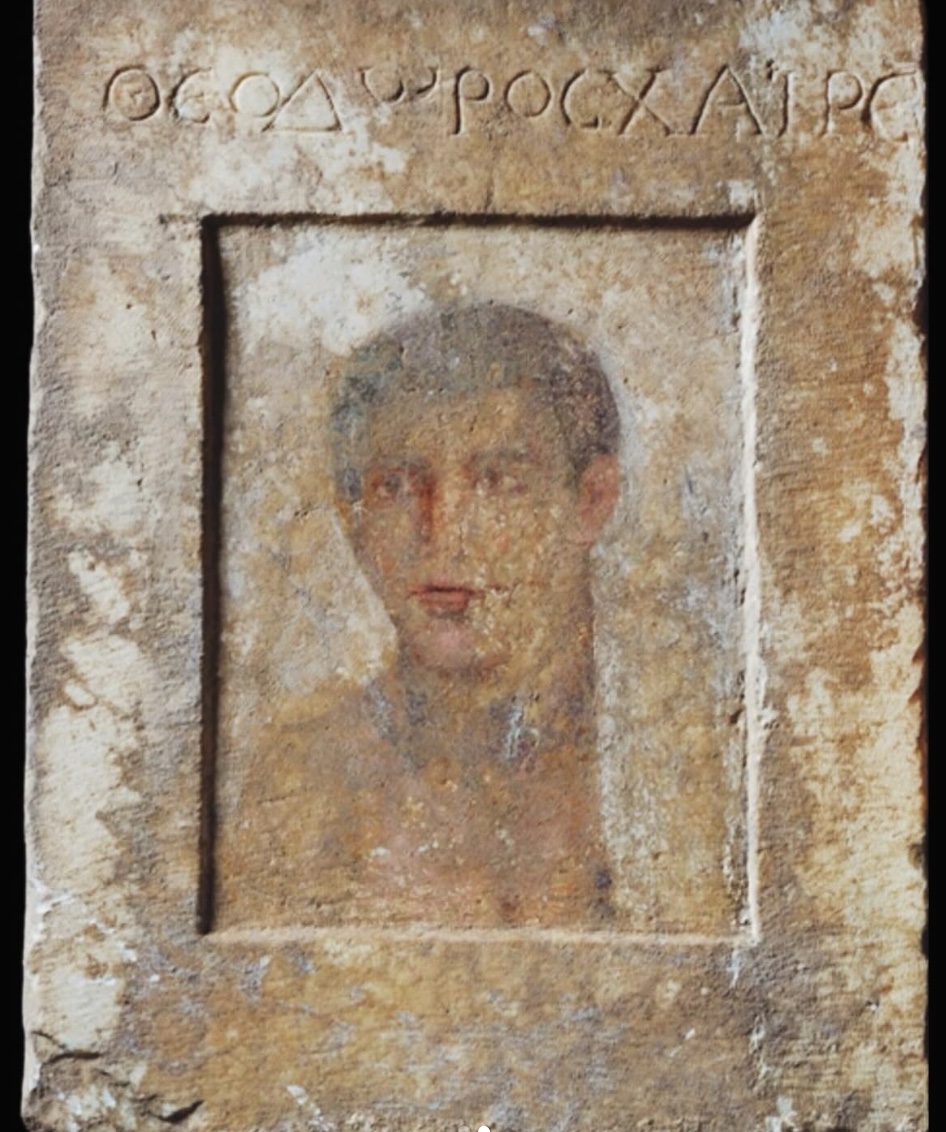This painted portrait is somewhat difficult to place in time and space, is it not? There are hints of the glorious Macedonian wall paintings as well as the knowing glances of Roman mummy portraits from the Fayoum.
It is a marble stele from Thebes, the Greek city that found itself continuously trounced by skirmishing armies and reduced to an economic backwater from the initial furious drubbing by Alexander in 335 B.C. until the Augustus’ victory at Actium in 31 B.C. finally put an end to geopolitical strife in the region.


This painted stele came from the city’s lower necropolis and dates to the first century B.C. – a turbulent period where the main artistic output in marble was elaborate grave monuments. Its preservation is rare and the format most unusual, showing the man from the chest up within a recessed square. The young man’s wistful expression and parted lips are rendered in the encaustic technique – pigments suspended in liquid wax and subtly layered to produce a most refined and lifelike result.
The Greek inscription on the upper frame reads ΘΕΟΔωΡΟC ΧΑΙΡΕ or ‘Farewell Theodoros’. Poignant, no?




